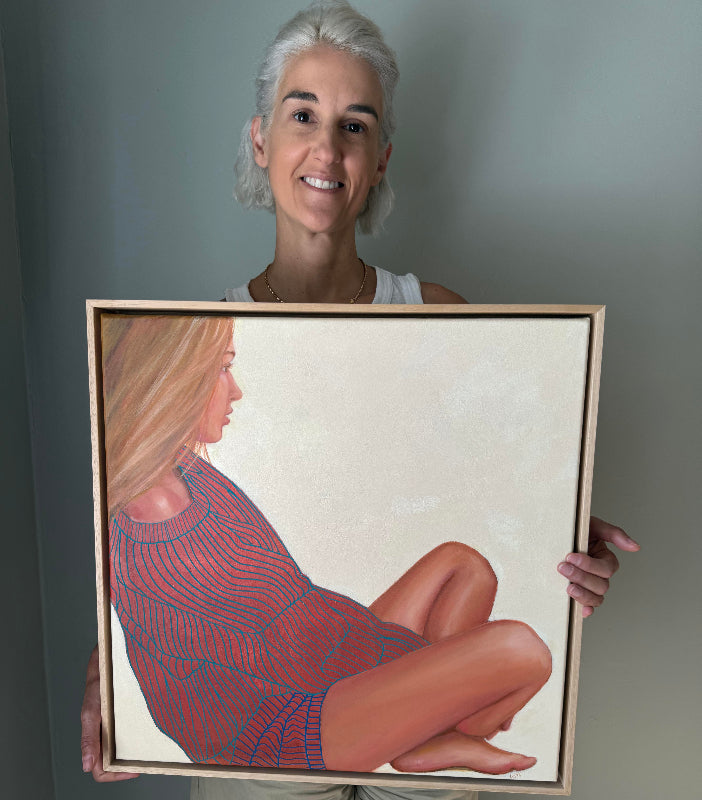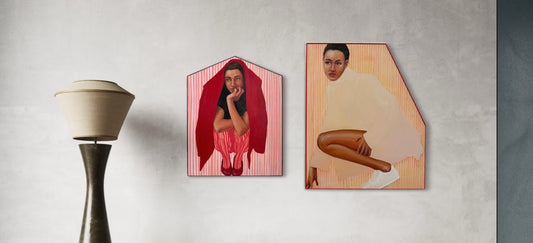
Art Collecting: Buying Art For Your Home
Adding art to your home is one of the most personal and impactful ways to transform your living space. Often, a home doesn't feel like a home until there is artwork on the walls. A carefully chosen piece can set the tone for a room, spark conversation, and reflect your personality. However, buying art isn’t just about picking something you like, it’s about finding the right piece for the right place. Here are the top ten factors to consider when investing in art for your home.
1. Know Your Space
Before buying art, take stock of your space. Measure the dimensions of the walls where you plan to hang art. Consider the scale of the room and how the artwork will fit. For example, a large, bold piece might be perfect as a statement over the sofa, while smaller works or a gallery wall can add charm to a hallway or nook.
Remember that larger pieces need more space around them. Often, you need to step back from a large painting to take in the whole work at once. A beautiful, large-scale painting may be lost or missed in a narrow hallway.
When you are hanging artwork above a sofa or buffet, you should consider hanging one large landscape-oriented artwork or multiple portrait-oriented artworks, as shown below.
2. Consider Your Style
Art should complement the overall aesthetic of your home. Is your décor modern, minimalist, eclectic, or traditional? A contemporary abstract painting might suit a sleek, modern living room, while a classic landscape or portrait may resonate better in a more traditional setting. However, don’t be afraid to mix styles—contrasts can create a dynamic, layered look.
3. Focus on Color
Art can tie together a room’s colour palette or introduce a pop of contrast. Pay attention to the colours in the room and decide if you want the artwork to harmonize or stand out. If your space is neutral, a vibrant piece can become the focal point. Conversely, a monochromatic artwork might bring a sense of calm to a busy room.
Further, a collection of artworks in different styles and mediums may be hung together cohesively if there is an overall colour palette that runs through them.
4. Invest in Quality
While budget is always a consideration, investing in quality pieces—whether originals, prints, or limited editions—can make a significant difference. Look for well-crafted works that resonate with you. If you’re buying prints, ensure they’re on archival-quality paper to maintain their longevity. All my prints are printed on archival-quality paper with good-quality inks, which means they will last longer.
5. Understand Lighting
Lighting can dramatically impact how art is perceived. Evaluate the natural and artificial light in your space. Direct sunlight can fade artwork over time, so consider UV-protective glass or strategically place pieces away from intense light. Proper lighting, like track lighting or picture lights, can elevate the visibility and impact of your art.
6. Frame It Right
The frame you choose can either enhance or detract from a piece of art. For example, sleek, minimalist frames work well for modern works, while ornate, gilded frames might suit traditional or classical art. Don’t underestimate the power of a simple raw oak frame—it adds warmth and suits a variety of styles.
Product image: Inner Centre painting by Leah Mariani
7. Think About Themes
The art you choose can tell a story throughout your home. Perhaps you focus on a specific theme—like mythology, nature, or abstract forms—or a particular medium, such as mixed media or screen prints. A cohesive theme doesn’t mean uniformity but rather a thread that ties the pieces together. Buying multiple works from the same art series means that the artworks within your home will work well together.
8. Support Artists
When possible, consider buying directly from artists. Not only does this allow you to support their work, but you’ll also gain insight into the story behind each piece. Art with a personal connection often carries greater meaning and value.
Product image: On Pointe limited edition print by Leah Mariani
9. Trust Your Instincts
While practical considerations matter, ultimately, art is about emotion. If a piece speaks to you, don’t overthink it. Trust your instincts and buy what you love—you’ll find the perfect place for it in your home.
Product image: Defensive Line limited edition canvas print by Leah Mariani
10. Rotate and Refresh
Over time, your taste and space may evolve. Don’t feel obligated to display the same pieces indefinitely. You don't need to have all your art on display at the same time. Rotating art, or updating frames, can refresh your home without the need to buy new pieces frequently. Don't be afraid to change it up sometimes.
Adding art to your home is a deeply personal journey that reflects your taste, passions, and the stories you want to tell. By considering these factors, you can create a space filled with pieces that resonate with you and bring joy every day.









